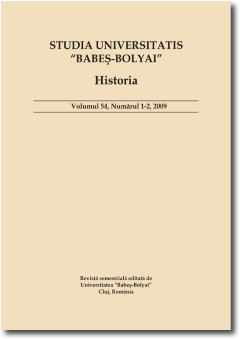HOW DID BAIA MARE BECOME THE SEE OF THE GREEK-CATHOLIC BISHOPRIC OF MARAMUREŞ?
HOW DID BAIA MARE BECOME THE SEE OF THE GREEK-CATHOLIC BISHOPRIC OF MARAMUREŞ?
Author(s): Lucian TurcuSubject(s): History
Published by: Studia Universitatis Babes-Bolyai
Keywords: Holy See; Concordat; reorganisation; Baia Mare; Sighet; bishopric; reports
Summary/Abstract: How did Baia Mare become the see of the Greek-Catholic bishopric of Maramureş? The idea to create a bishopric in the region of Maramureş was deeply rooted in the Greek-Catholic laic and ecclesiastic milieus but it could only become a reality in the middle of the interwar period. There have been many causes for this delay: in the 18th century, when the project took shape, the Ruthenian hierarchy of the Munkács diocese (to which the faithful of Maramureş were canonically submitted) strongly opposed the completion of this plan. Without much success, the idea re-emerged in the middle of the 19th century, in a context in which the Romanian Greek-Catholic Church was going through major canonical and institutional changes. This is how the actual steps for fulfilling this aspiration could only be taken after the creation of the Greater Romania. After Transylvania was united with the Romanian Kingdom, the idea to create an eparchy with a see in the north of the country returned even stronger, demanded by ecclesiastical and national imperatives. Despite this fact, reinstating the Maramureş eparchy had to be sanctioned by the Romanian authorities and the Holy See: this occurred relatively late, with the Concordat signed in 1927 and ratified two years later. This study presents for the first time the debates held by the Romanian clergy and episcopate in order to designate the see of the new Greek-Catholic eparchy. The advantages and the disadvantages of each option are analysed, as well as the lobbying for each of the two towns (Sighet and Baia Mare) and the intrusion of the political factor in this issue. Finally, it considers the attitude of the officials of the Catholic Church with regard to this matter.
Journal: Studia Universitatis Babes-Bolyai - Historia
- Issue Year: 57/2012
- Issue No: 2
- Page Range: 83-108
- Page Count: 26
- Language: English

